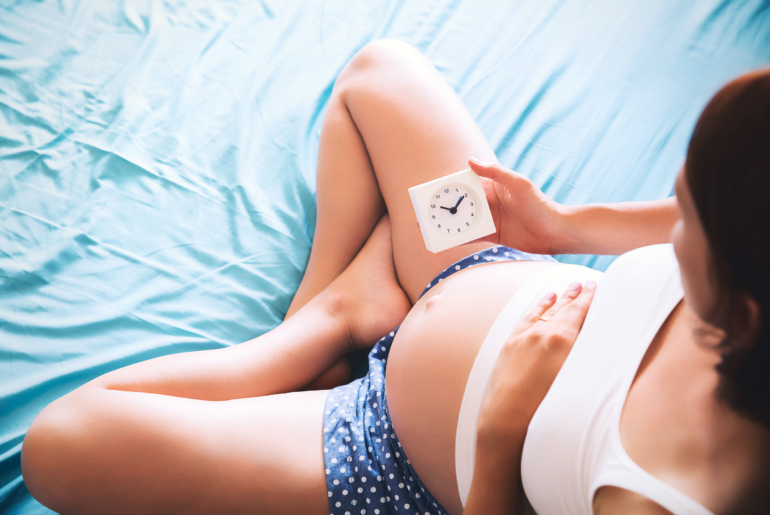When are pregnant women most likely to give birth? A study by City University of London shows that women are more likely to give birth in the wee hours of the morning, especially around 4 a.m., unless medical intervention occurs.
The data, encompassing more than five million births over a 10-year period in England, shows a clear pattern: spontaneous births (as opposed to medically induced or C-section) are significantly more likely to occur in the early morning between 1 a.m. and 7 a.m., with a peak around 4 a.m. They are slightly more common on weekdays than on weekends. And interestingly, they are less likely to occur on Christmas Day and Boxing Day (the day after Christmas).
Data from the CDC shows that birth time patterns are similar in the U.S., suggesting that there is something natural or evolutionarily beneficial about undergoing labor and birth in the middle of the night. Dr. Peter Martin, lead author of the British study, surmised, “Our ancestors lived in groups that were active and dispersed during the day and came together to rest at night. So a night-time labour and birth probably afforded the mother and newborn baby some protection.”
But when medical intervention is either chosen or deemed necessary, the trend of birth time shifts dramatically, shows the British research. Not surprisingly, pre-planned caesarean births are most likely to happen on weekday mornings during normal work hours, and not on weekends or holidays. But this is notable: Births after an induced labor are more likely to occur around midnight on Tuesdays to Saturdays, and on days before a public holiday period; births after induced labor peaked on Friday nights.
It appears that induction often occurs before holidays, weekends, and late nights, and concerns about convenience and/or staffing are probably a factor in those decisions. However, as Elizabeth Duff, a senior policy adviser at NCT, a UK charity that supports parents and that collaborated on the study, pointed out, “It’s worrying that induction appears to be timed so that the babies are most frequently born around midnight, when senior staff are less widely available to assist if complications arise.” (By contrast, in the latest U.S. data, induced vaginal deliveries peak during the day around 3 p.m., and then decline after 6 p.m.)
As for the low spontaneous birth rates on Christmas Day and Boxing Day? They could possibly be staved off by increased selective obstetric intervention in the days leading up to the holidays, says Dr. Martin, but further investigation is needed to fully understand this phenomenon.







